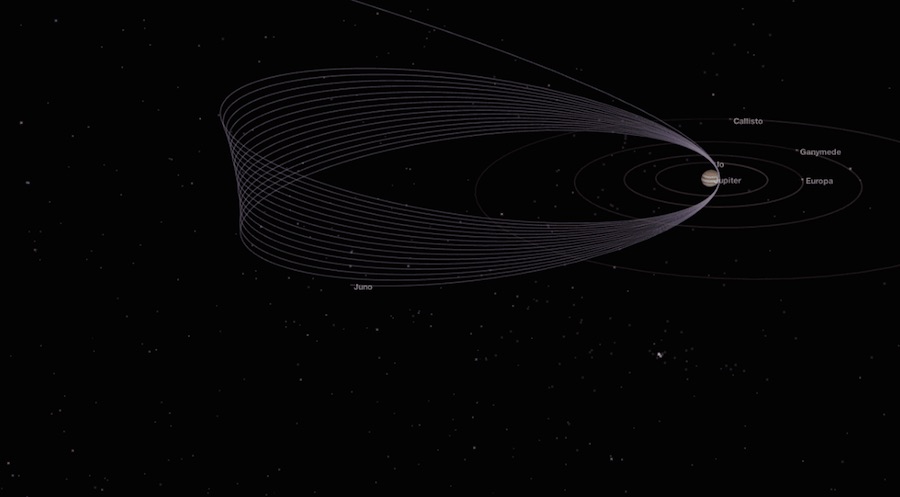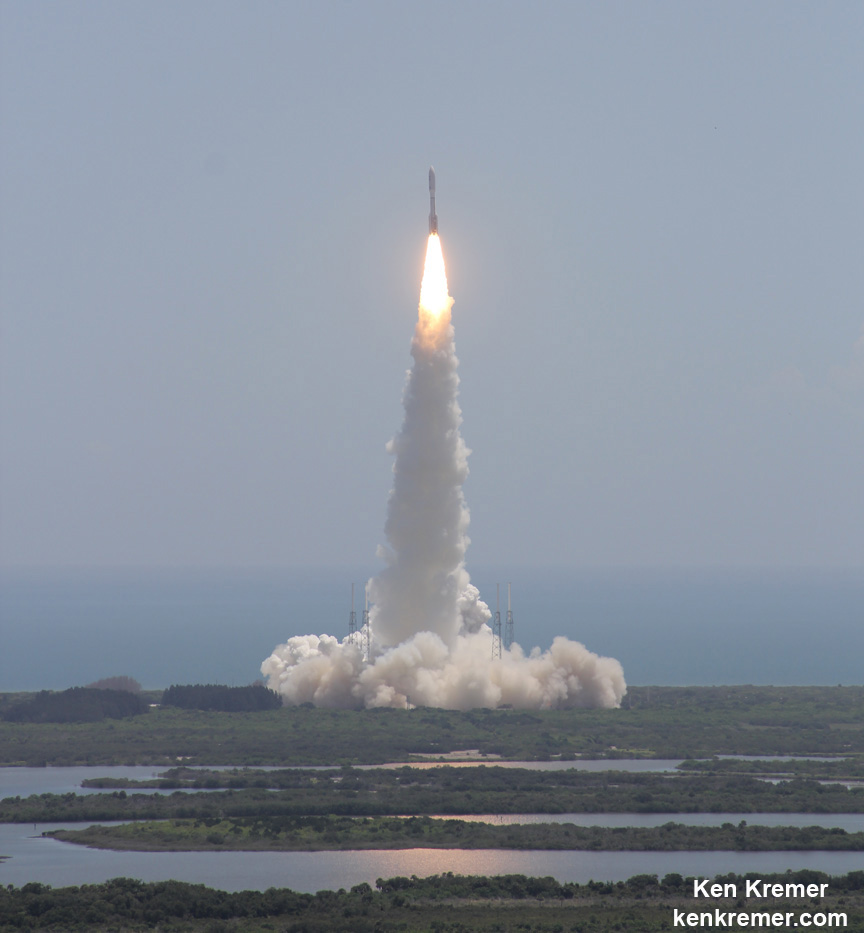FL – NASA officials have granted a three
year extension to the Juno mission currently orbiting Jupiter until 2021.
funds science and engineering operations through July 2021.
to achieve its primary mission goals.
its continued mission, NASA’s Juno spacecraft will maintain its 53-day polar
orbit around Jupiter,” NASA officials said.
much shorter 14-day long orbits. However concerns with valves related to its
main engine forced the team to abandon
plans to fire the main engine to lower and shorten the orbit.
where it could continue to make all its planned research observation – but just
over a longer period of time.
To date Juno has completed 12 orbits since arriving at Jupiter
in July 2016.
orbits as initially planned because of a concern about valves on the
spacecraft’s fuel system. This longer orbit means that it will take more time
to collect the needed science data.”
panel of experts confirmed in April that Juno is on track to achieve its
science objectives and is already returning spectacular results. The Juno
spacecraft and all instruments are healthy and operating nominally,” NASA noted.
The prime mission had been scheduled
to end in February of 2018 with a suicide plunge into the Jovian atmosphere to
prevent any possible contamination with Jupiter’s potentially habitable moons
such as Europa and Ganymede.
continue to answer long-standing questions about Jupiter that first fueled this
exciting mission, but they’ll also investigate new scientific puzzles motivated
by their discoveries thus far,” said Thomas Zurbuchen, associate administrator
for NASA’s Science Mission Directorate in Washington, in a statement.
and citizen scientists will help unveil new surprises about this distant
world.”
science instruments to gather totally unique observations of Jupiter’s interior
and exterior environment and determine the gas giants genesis.
new data that will unveil the hidden inner secrets of Jupiter’s origin and
evolution as it peers “beneath the obscuring cloud cover of Jupiter and study
its auroras to learn more about the planet’s origins, structure, atmosphere and
magnetosphere.”
 |
|
Artists concept of NASA’s Juno at Jupiter. Credit: NASA
|
“This is great news for planetary exploration as
well as for the Juno team,” said Scott Bolton, principal investigator of Juno,
from the Southwest Research Institute in San Antonio, in a statement.
to complete its primary science goals. As a bonus, the larger orbits allow us
to further explore the far reaches of the Jovian magnetosphere — the region of
space dominated by Jupiter’s magnetic field — including the far magnetotail,
the southern magnetosphere, and the magnetospheric boundary region called the
magnetopause. We have also found Jupiter’s radiation environment in this orbit
to be less extreme than expected, which has been beneficial to not only our
spacecraft, but our instrumunts and the continued quality of science data
collected.”
in the longer 53-day orbit,” Bolton told me in an earlier interview with Space
UpClose.
mysterious cloud tops takes place on July 16 during orbit 13.
was launched on Aug. 5, 2011 from Cape Canaveral Air Force Station, Florida atop
the most powerful version of the Atlas V rocket augmented by 5 solid rocket
boosters and built by United Launch Alliance (ULA).
prime contractor Lockheed Martin in Denver.
Jupiter was Galileo in 1995. It explored the Jovian system until 2003.
Boeing, Lockheed Martin, Orbital ATK and more space and mission reports direct
from the Kennedy Space Center, Cape Canaveral Air Force Station, Florida and
Wallops Flight Facility, Virginia.
Stay tuned here for Ken’s continuing Earth and Planetary science and human
spaceflight news: www.kenkremer.com
–www.spaceupclose.com – twitter @ken_kremer – email: ken at kenkremer.com




